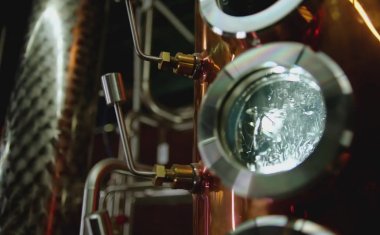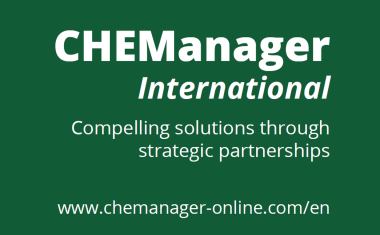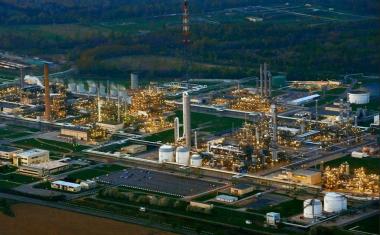Lanxess gets more ambitious, announces new mid-term goal

Lanxess has announced a new mid-term goal for its leading earnings indicator - EBITDA pre exceptionals - of EUR 1.8 billion in 2018. The German specialty chemicals company is strategically well-positioned to continue on its established growth path and plans to achieve its previously established goal of EUR 1.4 billion EBITDA pre exceptionals in 2014, a year ahead of schedule.
The company has increased its key performance indicator by an average of 20% annually since 2004. For 2012, the company reconfirmed its guidance for EBITDA pre exceptionals to increase by 5 to 10% year-on-year.
"We have transformed Lanxess into a growth company," said Dr. Axel C. Heitmann, Chairman of the Board of Management of Lanxess, at the group's Media Day in New York City. "In order to achieve our new mid-term goal, we will stick to our proven dual-track strategy of organic and external growth."
Strategy for success
Lanxess will move forward based on five proven elements of success: premium products focused on megatrends, flexible asset and cost management, a global reach with emphasis on emerging markets, innovation and technology, and an entrepreneurial and performance-oriented business culture. The company's focus on premium products has been critical to its price-before-volume approach, in which Lanxess forgoes business, when it cannot achieve an appropriate price for its products.
Through its strict adherence to this strategy, the specialty chemicals company has successfully managed the price volatility of raw materials and other input costs. In the last two and a half years, Lanxess has passed on roughly EUR 1.8 billion in added raw material and energy costs. The focus on emerging, high-growth markets will remain essential to Lanxess' long-term growth. Since 2005, the company has grown by nearly 70% in the Asia-Pacific region, and by almost 40% in North and Latin America combined.
As Lanxess' premium product strategy remains at the forefront of its growth, it will continue to focus on the same four key megatrends: mobility, urbanization, agriculture and water.
"Green Mobility" as growth driver
With regard to the global demand for more sustainable mobility, Lanxess serves its customers with synthetic rubber for "Green Tires" and lightweight materials for use in automobiles, both of which contribute to significant reductions in fuel consumption and emissions. "Our strength in ‘Green Mobility' is reflected in our strong results," said Heitmann.
Products related to "Green Mobility" accounted for 17% - or EUR 1.5 billion - of Lanxess' total sales in 2011. In the first half of 2012, sales of these products rose by roughly 20% year-on-year at EUR 878 million. The company aims to increase its total "Green Mobility" revenue to EUR 2.7 billion in 2015.
Dual-track growth
Lanxess will continue to pursue a disciplined dual-track growth strategy, which will maintain roughly a two-to-one ratio of organic to external growth, thus prioritizing capital expenditure projects over acquisitions. In the last two years, the company has announced about EUR 1.4 billion in capex, the majority of which has been allocated to Lanxess' Performance Polymers segment. This includes debottlenecking, retrofitting and greenfield sites
Capex investments catering to trends in mobility have been made in the company's global production network for premium lightweight plastics. Amounting to EUR 125 million over the next two years, these are expected to generate annual sales of EUR 200 million as of 2016.
In emerging markets, more capex has gone into greenfield investments, with the object of building a new asset platform. A prime example of this is Lanxess' neodymium-based performance butadiene rubber (Nd-PBR) plant in Singapore - the largest of its kind globally - serving its Asian clients with rubber for "Green Tires." For an investment of roughly EUR 200 million, the company forecasts annual sales of EUR 300 to 350 million as of 2017.
External growth
Last week, the company acquired "Bond-Laminates", a German firm that produces custom-made plastic composite sheets that are reinforced with materials such as glass fibers. In comparison to metal parts, the plastic composite sheets are easier to process and weigh up to 40% less. This means the automotive industry can cut production costs and increase freedom of design.
"We maintain discipline whenever we consider any potential organic or external growth projects," added Heitmann. "All capex projects must deliver a return at or above the company's ROCE, while our acquisitions must meet strict strategic and financial criteria, including being EPS-accretive within three years."
Lanxess with 14 business units
Lanxess will, as of January 1, 2013, expand its existing portfolio of 13 business units to 14. In a move that reflects the growing importance of its global ethylene propylene diene (EPDM) synthetic rubber business, the Technical Rubber Products (TRP) business unit will be split in two. Keltan Elastomers (KEL) will become a standalone business unit covering solely EPDM. It will be headed by Guenther Weymans, the current head of TRP, and will have about 600 employees at sites in the Netherlands, China, the United States, Germany and Brazil.
The current head of TRP's EPDM business line, Ming Cheng Chien, will become Chief Executive Officer of Lanxess Greater China. The current head of Greater China, Martin Kraemer, will lead the newly formed business line Benzyl Products and Inorganic Acids within the business unit Advanced Industrial Intermediates (AII). These changes will take effect February 1, 2013.
In China, Lanxess is investing EUR 235 million to build an EPDM rubber plant for which the company has targeted future annual sales on the order of EUR 400 million once the plant is running at full capacity. EPDM is used in many automotive applications, such as windshield wipers and door seals, and China is now the world's largest automotive producer.
Besides EPDM, TRP's portfolio includes polychloroprene rubber, hydrogenated nitrile rubber, ethylene vinyl acetate rubbers and nitrile rubber. These products will now be part of another standalone business unit called High Performance Elastomers (HPE), headed by Jan Paul de Vries, with about 800 employees at sites in Germany, the United States, France and China. Some 100 employees will move from TRP to Group Function Innovation & Technology.
















